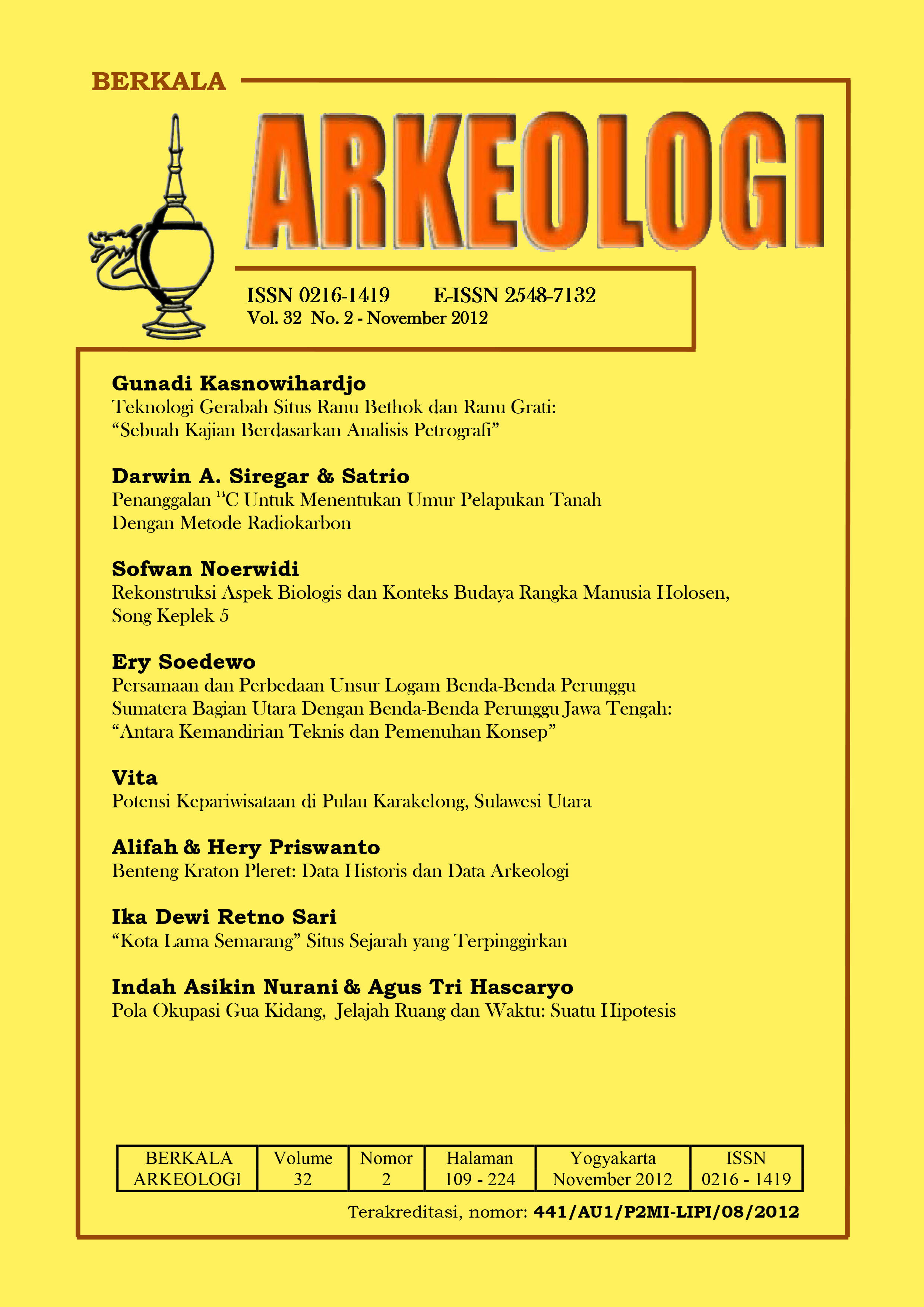TEKNOLOGI GERABAH SITUS RANU BETHOK DAN RANU GRATI: SEBUAH KAJIAN BERDASARKAN ANALISIS PETROGRAFI
Main Article Content
Abstract
Petrographic analysis is able to explain about the technology of pottery making, where the pottery come from and how to the pottery spread out. Petrographic analysis of sherds found either from the surface survey and excavations in the region of Bethok and Grati Lakes, can indicate whether the pottery found at the sites above have similar elements with the pottery marketed in the local market nowadays?. Based on the results of petrographic analysis can be concluded that the fragments of pottery found at both sites above have similar material elements of pottery now found in the local markets. Thus since long time ago pottery marketing from Besuk village production have reached the regional Tiris market within about 50 Km. Similarly, the pottery artefacts found at the Grati Lake are assumed to have originated from Keraton village production around 50 Km from the site.
Article Details

This work is licensed under a Creative Commons Attribution-NonCommercial-ShareAlike 4.0 International License.
References
Ahmed, Wase 2000. “Petrographic Examination Methodsâ€, Tech – Notes, Vol. 3, Issue 5, Published By Buehler (tanpa no. halaman).
Dickinson, Williams R., 1998. “Petrographic Temper Provinces of Prehistoric Pottery in Oceaniaâ€, Records of the Australian Museum, Vol. 50 (3): hal. 263 – 276.
Kerr, P. F. 1977. Optical mineralogy. McGraw-Hill, New York, United State of America.
Majid, Zuraina. 1989. Ekologi Manusia, Pekaling Jaya. Kualalumpur: Penerbit Fajar Bakti sdn.Bhd.
Orton, Clive, 2000. Sampling in Archaeology, Cambridge University Press, United Kingdom.
Phillips, W. R. 1971. Mineral optics. W. H. Freeman, San Francisco, USA.
Shotton, F. W., and G. L. Hendry. 1979. “The developing field of petrology in archaeologyâ€. Journal of Archaeological Science, Vol. 6, issue 1, March 1979, hal. : 75-84.
Stoltman,. 1989. “A quantitative approach to the petrographic analysis of ceramic thin sectionsâ€. American Antiquity., 54:147-160.
Stoltman,. 1991. “Ceramic petrography as technique for documenting cultural interaction: an example from the upper Mississippi Valleyâ€. American Antiquity, 56:103-120.
Stoltman.1996. “Petrographic observations of selected sherds from Wind Mountainâ€. Pp. 367-371 in Mimbres Mogollon Archaeology (A. Woosley, and A. McIntyre, eds.). Univ. New Mexico Press, Albuquerque.
Stoltman. 2001. “The role of petrography in the study of archaeological ceramicsâ€. Pp. 297-326 in Earth Sciences and Archaeology (P. Goldberg, V. T. Holliday, and C. R. Ferring, eds.). Kluwer Academic Pub., New York.

